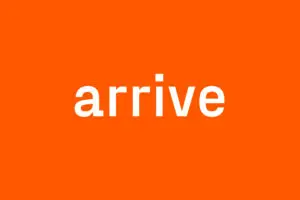What is a Content Calendar?
A content calendar is a tool used by marketers, bloggers, and businesses to plan and organize their content marketing efforts over a specific period of time. It is essentially a schedule or timeline that outlines the topics, types, and distribution channels for your content.
A content calendar can include information such as the date and time the content will be published, the type of content (e.g. blog post, social media post, video, etc.), the topic or theme, the target audience, the distribution channels, and the team members responsible for creating and publishing the content.
The purpose of a content calendar is to help ensure that you consistently produce high-quality content that aligns with your marketing goals and resonates with your target audience. It can also help you stay organized, plan ahead, and avoid duplication or gaps in your content.
By using a content calendar, you can plan your content strategy in advance, assign tasks and deadlines to team members, track your progress, and analyze the effectiveness of your content. Overall, a content calendar is a valuable tool for any business or individual who wants to create a successful content marketing strategy.
How Do I Go About Creating A Content Calendar For My Business?
Creating a content calendar can help you plan and organize your content marketing efforts over a specific period of time. Here are some steps to create a content calendar:
- Define your goals: Start by defining your content marketing goals and objectives. What are you trying to achieve through your content marketing efforts? This will help you identify the types of content you should create and the topics you should focus on.
- Identify your target audience: Who is your target audience for your content? What are their interests, pain points, and needs? Understanding your audience will help you create content that resonates with them.
- Choose your content formats: Decide on the types of content you want to create, such as blog posts, videos, infographics, social media posts, podcasts, or webinars. Consider which formats will best suit your goals and target audience.
- Brainstorm content ideas: Use tools such as keyword research, competitor analysis, or customer feedback to generate a list of content ideas. Make sure your content aligns with your goals and target audience.
- Plan your content calendar: Choose a calendar tool, such as Google Calendar or a project management tool, and create a new calendar. Set the time frame for your content calendar (e.g., monthly, quarterly, or annually) and start filling in the dates with your content ideas.
- Assign tasks and deadlines: Assign tasks to team members or yourself, and set deadlines for each task. This will help you stay on track and ensure your content is published on time.
- Review and adjust your calendar: Regularly review your content calendar to ensure it aligns with your goals and objectives. Make adjustments as needed, based on feedback or changes in your business priorities.
Creating a content calendar takes time and effort, but it can help you stay organized and focused on creating high-quality content that resonates with your audience.
What Are Content Pillars?
A content pillar is a large piece of content that serves as the foundation for a broader content marketing strategy. It is usually a comprehensive, in-depth piece of content that covers a specific topic in detail and is designed to provide value to the target audience.
Content pillars are typically longer-form pieces of content, such as an e-book, white paper, or comprehensive guide. They can also be a series of blog posts or videos that cover a specific topic from different angles.
The purpose of a content pillar is to establish your authority and expertise on a specific topic, and to provide a wealth of information to your audience. It can also serve as a starting point for creating additional, smaller pieces of content, such as blog posts, social media posts, or videos.
By creating a content pillar, you can attract and engage your target audience, establish your brand as a thought leader in your industry, and drive traffic to your website. It can also help you streamline your content creation process and provide a framework for future content marketing efforts.
How Long Should My Content Articles Be?
The length of a blog article depends on the topic, the target audience, and the goals of the blog post. However, there are some general guidelines to consider when determining the ideal length for a blog post.
According to a study by Orbit Media, the average length of a blog post in 2021 was around 1,500 words. However, blog posts that are longer tend to perform better in terms of SEO, engagement, and social shares. In fact, according to a study by Backlinko, the average length of content for pages that rank in the top 10 search results on Google is over 2,000 words.
That being said, the length of your blog post should ultimately be determined by your goals and your audience’s preferences. For example, if your goal is to provide a quick tip or answer to a question, a shorter blog post may be more appropriate. On the other hand, if your goal is to provide an in-depth analysis or comprehensive guide on a topic, a longer post may be more effective.
Here are some general guidelines for blog post lengths based on their purpose:
- Quick tips or answers: 300-500 words
- Listicles or product reviews: 500-1,500 words
- How-to guides or tutorials: 1,500-2,500 words
- Comprehensive guides or research-backed articles: 2,500+ words
The length of your blog post should be long enough to provide value and achieve your goals, but not so long that it becomes overwhelming or difficult to read.
How Often Should I Post To My Facebook Page?
The frequency of posting on your business Facebook page depends on various factors, including the type of content you post, your target audience, and your marketing goals. However, there are some general guidelines you can follow to determine how often you should post on your page.
According to Facebook’s own recommendation, businesses should aim to post at least once a day. However, it’s important to note that quality is more important than quantity, so focus on creating high-quality content that engages your audience rather than simply posting for the sake of meeting a quota.
Here are some general guidelines for posting frequency on your business Facebook page:
- Post at least once a day: This will help ensure that your page stays active and visible to your audience.
- Test different posting frequencies: Depending on your audience and the type of content you post, you may find that posting more or less frequently works better for your page.
- Consider the time of day: Posting at different times of the day can help you reach different segments of your audience. Use Facebook Insights to track when your audience is most active and experiment with different posting times.
- Focus on quality over quantity: It’s better to post high-quality content less frequently than to post low-quality content frequently. Focus on creating content that provides value to your audience and engages them in conversation.
While Facebook recommends posting at least once a day on your business page, the optimal posting frequency depends on your audience and the type of content you post. Experiment with different posting frequencies and times to determine what works best for your page.
Where Can I Find A Template For A Content Calendar?
There are many resources available online where you can find a template for a content calendar. Here are a few options:
- HubSpot Content Calendar Template: HubSpot offers a free, downloadable content calendar template that includes sections for tracking content type, keywords, author, and more. You can customize it to fit your needs and use it to plan and organize your content marketing efforts.
- CoSchedule Content Calendar Template: CoSchedule offers a free, customizable content calendar template that includes sections for tracking your blog posts, social media updates, email campaigns, and more. You can use it to plan and schedule your content in advance, and keep track of deadlines and publishing dates.
- Hootsuite Content Calendar Template: Hootsuite offers a free, downloadable content calendar template that includes sections for tracking your social media posts, including the date and time of publication, the platform, the content type, and more. You can use it to plan and organize your social media content in advance, and ensure that your posts are consistent and on-brand.
- Trello Content Calendar Template: Trello offers a free, customizable content calendar template that you can use to organize your content ideas, plan your content schedule, and track your progress. It includes sections for brainstorming, planning, and executing your content marketing strategy, and allows you to collaborate with team members and stakeholders.
These are just a few examples of the gazillions of content calendar templates available online. Choose the one that best fits your needs and customize it to match your content marketing goals and objectives. Or have a go at creating your own. The main thing is that you make a start and get all of the ideas out of your head. Once you have done this, putting them in a logical order and understanding what you want to write about makes more sense.
If you would like help in creating your own content calendar but don’t have the time to do it yourself, get in touch with us for a 20 minute chemistry call.












